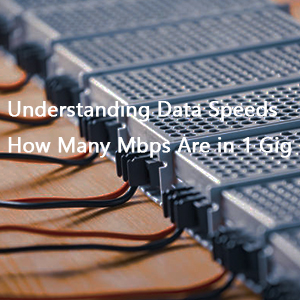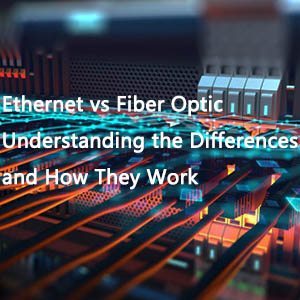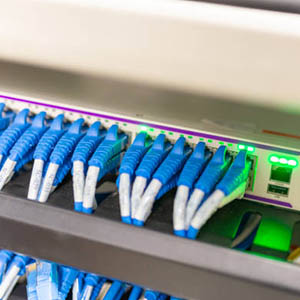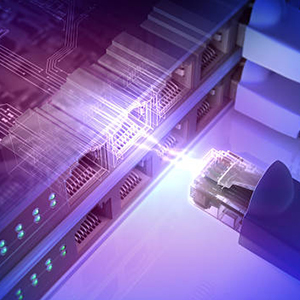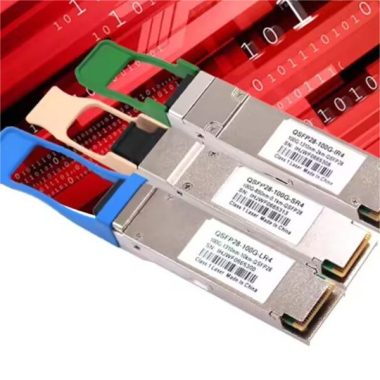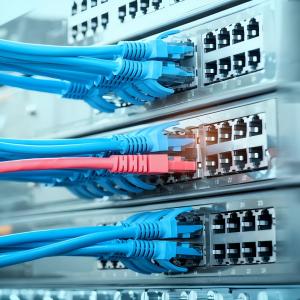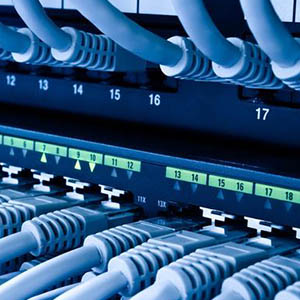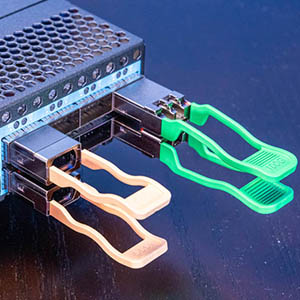When deciding whether to use an SFP port or an RJ45 Ethernet port for your 1000Mbps connection to an access switch, the choice often comes down to personal preference. But which is the right choice for your network setup—an RJ45 or an SFP port? This article will explore the details of what SFP and RJ45 are, how they differ, and their unique characteristics and applications.
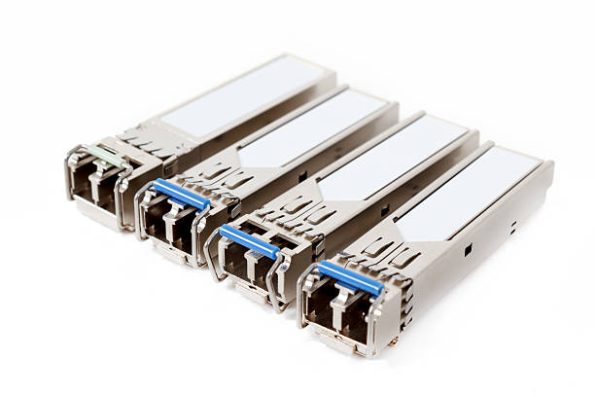
SFP vs RJ45: What Are They?
SFP
Network switches with SFP ports are designed to offer a variety of fast and adaptable connectivity options. These ports provide greater network design flexibility by using interchangeable transceivers that support multiple media types, including both copper and fiber optic cables. Depending on the type of transceiver being used, SFP ports can handle rates ranging from 100 Mbps to 1 Gbps or more. Due to their versatility, SFP connectors are ideal for environments that require a range of connectivity options or future upgrades. For example, in data centers or enterprise networks where high data throughput and long-distance connections are common, SFP ports provide a scalable and adaptable solution.
RJ45
RJ45 ports, on the other hand, are the standard connectors used for Ethernet networks. These ports connect network devices using twisted-pair cables (such as Cat5e, Cat6, or Cat6a) and are commonly found on most network switches. RJ45 ports are typically used for speeds up to 1 Gbps, making them suitable for most office and small business environments. They offer a straightforward and cost-effective solution for network connections, making them a go-to choice for standard Ethernet setups where high-speed and reliable local area network (LAN) connections are needed.
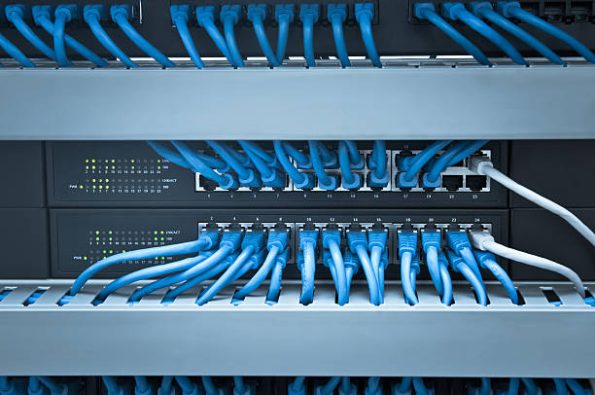
SFP vs RJ45: A Detailed Comparison
The debate between using SFP ports or RJ45 ports often arises when discussing networking infrastructure. There are several important considerations when deciding which is better. Here’s a detailed comparison to help you make an informed decision:
Speed
SFP ports are designed for use with fiber optic cables, which generally offer higher speeds and longer transmission distances compared to the copper cables used with RJ45. An SFP module might support speeds such as 1G, 10G, or even higher, depending on the specific type of module. RJ45 Ethernet ports are typically limited to 1Gbps speeds over copper cables, although newer standards like Cat6a can support 10Gbps over short distances (up to 100 meters).
Distance
SFP ports clearly excel in terms of distance. With the appropriate fiber optic module, SFP ports can transmit data over kilometers, making them ideal for campus networks and large data centers. RJ45 ports are mostly restricted to shorter distances, usually up to 100 meters with copper cabling.
Latency
Another important consideration in networking is latency, or the amount of time it takes for data to travel from its source to its destination. SFP generally offers lower latency than RJ45, especially when using fiber-based SFP. This is because light travels faster in fiber than electrical signals do in copper, resulting in less delay. As a result, SFP ports are more suitable for environments with high levels of electromagnetic interference (EMI).
Energy Consumption
Energy consumption is another important factor to consider. SFP ports, especially those using fiber optic variants, tend to consume less power compared to RJ45 ports. Copper-based RJ45 connections often require more power to transmit data, which can add to operational costs in power-sensitive environments.
Deployment
RJ45 connectors and cables are widespread and familiar to most network professionals, often making deployment simpler and faster without the need for specialized fiber optic installation skills.
Cost
While RJ45 ports and cables are often less expensive upfront, the power and cooling requirements may result in a higher total cost of ownership for large-scale deployments. SFP ports might have a higher initial setup cost (due to transceivers and fiber optic cables), but they often provide better performance and future-proofing for extensive networks.
Application Scenarios
Choosing between SFP and RJ45 ports depends on specific network needs:
SFP Ports (Fiber Optic):
- Long-Distance Communications: Ideal for enterprise networks, telecommunications, and data centers requiring multi-kilometer transmission.
- High-Speed Networks: Supports speeds over 1 Gbps, suitable for academic institutions, research centers, or HD video streaming with SFP+ or QSFP modules.
- Electrically Noisy Environments: Preferred in industrial settings or areas with high electromagnetic interference due to fiber’s resistance to noise.
- Secure Communications: More secure than copper cables, making them suitable for government, military, or financial institutions requiring secure data transmission.
RJ45 Ports (Copper Ethernet):
- Local Area Networks (LANs): Common in home networks, small offices, or single-building networks where long-distance speeds are not required.
- Cost-Conscious Deployments: More budget-friendly, ideal for environments where performance is not the primary concern.
- Ease of Installation: Widely used and familiar, perfect for quick or temporary setups without specialized skills.
- Power Over Ethernet (PoE): Can deliver both data and power to devices like VoIP phones, wireless access points, or cameras, which is not possible with standard fiber SFPs.
SFP vs RJ45, Which One is Better?
When deciding between SFP and RJ45 ports, consider your network’s specific needs and constraints. To illustrate, let’s compare two network switches:
S5810-48TS
This model features 48 RJ45 ports, designed for standard Ethernet connections. It supports speeds up to 1 Gbps and is ideal for typical office and residential networks where cost-effectiveness and ease of deployment are key considerations. Its RJ45 ports offer straightforward connectivity for a variety of network devices.
S5810-48 FiberLife
In contrast, the S5810-48 FiberLife includes 48 SFP ports, which are suited for high-speed and long-distance connections. This switch is well-suited for environments that demand high performance, such as data centers or enterprise networks, where fiber optic connections are preferred for their speed and reduced latency.
Conclusion
Choosing the right connection port is crucial when building an efficient network connection. As the core component of the network, the performance of the switch directly affects the efficiency and stability of the entire network. Therefore, it is important to choose a professional supplier such as FiberLife.
Whether you are selecting modules for RJ45 ports or SFP ports, FiberLife offers brand-compatible solutions to meet the needs of different network environments. Especially in complex and demanding remote communication environments such as metropolitan and wide area networks, FiberLife products, with their superior performance and reliability, are the core value for creating efficient and flexible network connectivity.


